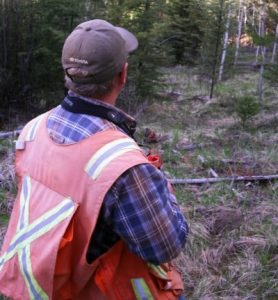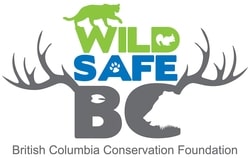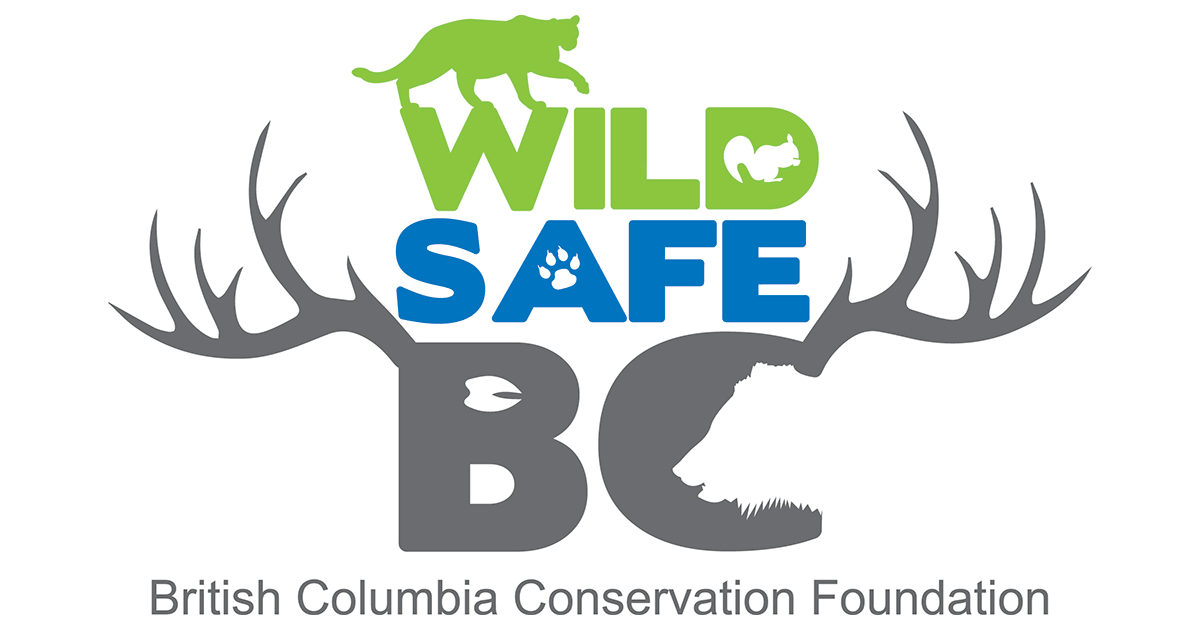Working in Wildlife Country
All of British Columbia is considered wildlife country. All workers may encounter wildlife from urban coyotes and raccoons, deer crossing highways, to working in remote locations with grizzly bears. Workers should become knowledgeable about the wildlife they can expect to encounter before they head to work so that they can take the proper precautions and mitigate their impact on wildlife.
Urban Wildlife
When working in urban environments, it is important to follow some best practices. Never feed or approach wildlife. This includes feeding coyotes, raccoons and squirrels. While you may not be injured, a food-conditioned animal may become accustomed to receiving a food reward and may aggressively approach unsuspecting people. Currently there are no records of rabies in species other than bats in BC, however, if you are bitten or scratched by a wild animal, you should seek medical attention. Feeding birds inappropriate foods such as bread and crackers can also be detrimental to wildlife.
Travelling through BC
Every year, approximately 4 people are killed and 870 people are injured in vehicle-wildlife collisions in BC. The BCCF Wildlife Collision Prevention Program provides information on where and when collisions are likely to happen. It also provides other advice such as how to reduce the chances of being in a collision and what to do if a wildlife collision occurs.
Working in Wildlife Habitat
 When working in the field, be aware of the wildlife you can expect to encounter and review specific recommendations for each species. Advice for rattlesnakes will differ greatly from advice for bears. General guidelines include:
When working in the field, be aware of the wildlife you can expect to encounter and review specific recommendations for each species. Advice for rattlesnakes will differ greatly from advice for bears. General guidelines include:
- Make your presence known by using your voice – the best encounter is the one you avoid
- Travel in groups whenever possible
- Watch for wildlife signs (scat, scratches on trees, overturned logs, fresh kills)
- Avoid travelling at dawn and dusk when predators are most active
- Know the habitat and seasonal use by wildlife (eg. bears using berry-producing shrubs or salmon-bearing streams)
- Carry safety equipment such as bear spray and know how transport and use it safely. Bear spray is effective against all large mammals and should be your first choices as a deterrent.
- If you encounter dangerous wildlife, stay calm, never run and know how best to react by reviewing the black bear, grizzly bear, cougar, wolf and coyote pages. If you are in the Thompson Okanagan, become familiar with rattlesnakes.
- Have a workplace wildlife safety plan and checklist that should be reviewed before heading into the field
- Ensure all workers that may potentially encounter wildlife are properly trained in wildlife awareness and safety by a qualified instructor (contact WildSafeBC to learn more about services we can provide).
Work Camps
When camping in wildlife country, it is important to follow bare camping practices. When setting up a temporary work camp site, look for wildlife signs in the immediate area and avoid camping close to water and wildlife food sources such as berry-producing shrubs and salmon-bearing streams. Do not set up camp in known wildlife corridors or travel routes.
If setting up multiple tents, avoid a circle configuration as it may confuse a bear that wanders through and make escape routes less obvious. Food preparation and storage should be a minimum of 50 metres away. Food should be stored in bear-resistant containers and/or suspended from a line stretched between two trees or posts. The food should be at least 3 metres above the ground and 1.5 metres away from the nearest tree or post. Consider using portable electric fences to surround camp food preparation and eating areas.
Never bring food or other odorous items into your tent but do bring your bear spray and a flashlight. Note that wildlife may be attracted to the smells of your camp and may come to investigate day or night. All staff should be trained on attractant management and wildlife safety with zero tolerance for feeding wildlife.
In addition, when setting up long-term work camps, chose a site away from known wildlife usage areas (eg. salmon-bearing streams). Use bear-resistant garbage containers and have a comprehensive solid waste management plan that addresses the prompt removal of organics from the site. Keep the site free of attractants and smells. Have bear spray readily accessible on site in a location known to all staff. Ensure there are clear sightlines around all buildings, vegetation is cleared back from the site perimeter and there is adequate lighting with motion-activated lights. Have a wildlife reporting system in place so that all shift workers can be made aware of wildlife activity around the camp.


